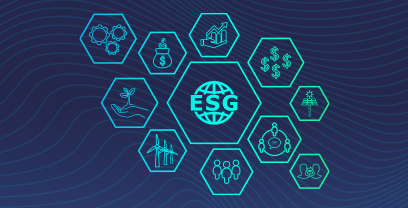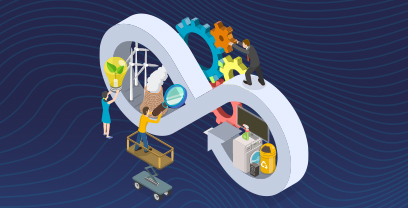As procurement’s role in increasing organizational sustainability efforts – particularly around emissions reduction – grows in scope and impact, the pressure to act and a sense of urgency from the business have created a high-stakes effort that is both challenging and highly rewarding to manage.
To help us understand procurement’s evolving role in reducing carbon emissions for the business in advance of World Sustainable Procurement Day 2024, #LoveProcurement podcast host Kelly Barner spoke with Thomas Udesen, Chief Procurement Officer at Bayer and co-founder of The Sustainable Procurement Pledge, and Oliver Hurrey, lead of the Champions Program. Both are heavily involved in promoting and advancing sustainability efforts in the procurement community.
High Stakes for Procurement
“Procurement is in a perfect storm, and no matter who you work for there are a multitude of opportunities and pressures around you,” said Oliver. In addition to mounting expectations, there “panic” in some circles about the pressure to reduce emissions and improve sustainability programs ahead of impending regulations.
This “storm” is also fueled by growing consumer demand for sustainable brands and the increasing potential for sustainability to provide the business with a competitive advantage. With all of this swirling in the collective business ethos, the opportunity for procurement to have an impact on sustainability initiatives has, quite literally, never been larger.
“In all the large corporations, there is a very high awareness of sustainability,” said Thomas. “But, in small- to medium-sized organizations, the urgency is also increasing, and we’re even starting to see signs of panic as people are becoming very conscious that there are regulations that will soon be very real.”
Procurement is feeling a 360-degree push toward sustainability, whether from the government in the form of regulations, the business in the form of ESG goals and competitive advantage, the consumer in the form of buying preferences and brand expectations, or the personal in the form of each professional’s own desire to make a difference. But, they add, one’s personal beliefs are not a prerequisite for taking action.
“Whether you believe in certain things related to climate or not, or whether it’s a personal or professional belief, there is a lot of disruption coming, for the business and in the supply chain,” said Oliver.
Overcoming Overwhelm
Contributing to or driving an organization’s sustainability program and ensuring a sustainable supply chain can be an intimidating call to action for procurement, who might not feel they have the technical expertise to lead the organization toward its sustainability goals or keep the business in compliance with growing regulations. But, say Thomas and Oliver, procurement is more prepared than they realize. They shouldn’t let overwhelm or insecurity be the enemy of progress. After all, procurement is no stranger to a good crisis.
“Procurement is eternally expected to be the expert on everything – every topic, every disaster, every crisis – and they’re facing the same challenge with sustainability and emissions,” said Oliver. Fortunately, he says, sustainability and emissions, although highly technical, require the same skills and approaches as other categories procurement has been leading for years.
“Working on sustainability and reducing emissions comes down to things procurement is used to, like cost, value, and price,” said Oliver. “It is about understanding where those risks lie, where the opportunities lie, and asking the right questions at the right time to drive a bit of action.”
It all starts, says Oliver, with supplier engagement. “You can’t do anything towards sustainability without having a good conversation with your suppliers,” he said. Ask if they have science-based targets for carbon emissions or if they have invested in renewable energy. Then, it is just a matter of doubling-down on supplier engagement, through things like embedding contracts or clauses, collecting data, or, most importantly, driving reductions where possible.
Procurement Makes the World Go Round
While procurement is facing a new reality when it comes to sustainability demands, much of what they need to bring value to the business and the supply chain is already baked into their DNA.
“There’s this idea that we have to get procurement to think differently or change or evolve in order to work on sustainability,” said Oliver. “While some of that is true, a lot of it is about just harnessing what they’re already brilliant at.”
This, believes Thomas, is where procurement’s unique strengths have the potential to solve some of the biggest sustainability challenges facing the global supply chain today.
“There’s no end to what’s possible in procurement. We’re one of those unique functions that work all along the value chain – we’re everywhere,” Thomas said. “The deals we make, they make the world go around, and the decisions we make about sustainability impact lives for good or for bad. It’s a responsibility procurement is privileged to have.”
To learn more about World Sustainable Procurement Day, click here.




